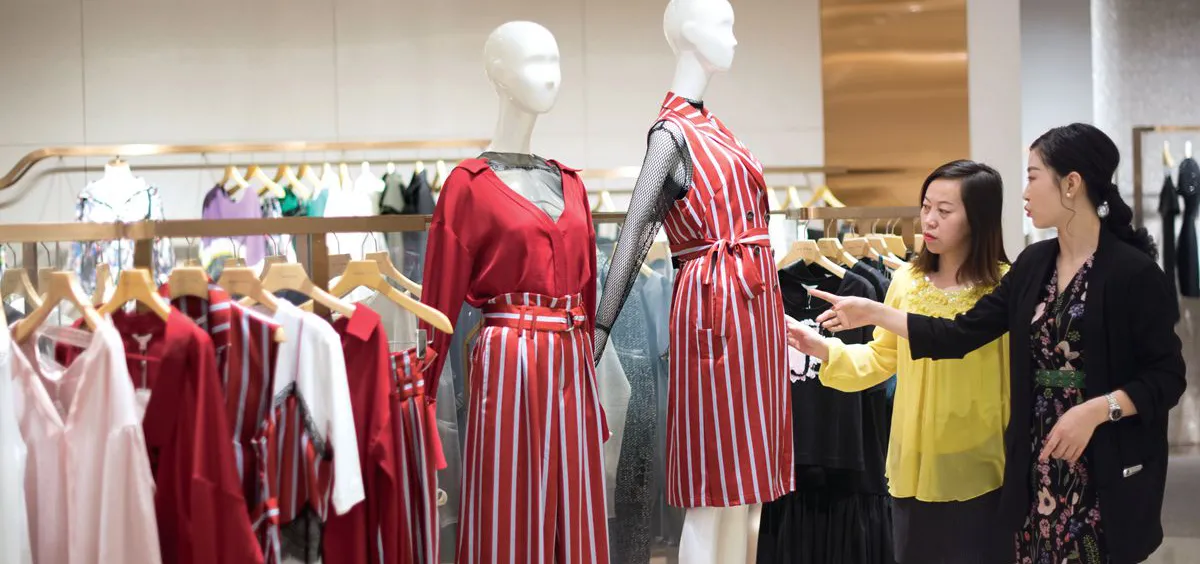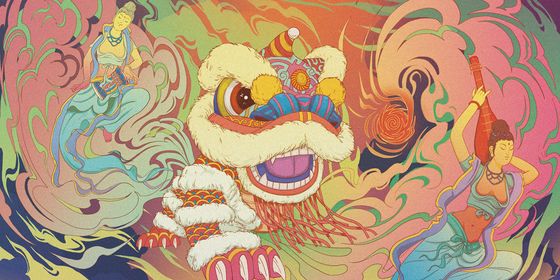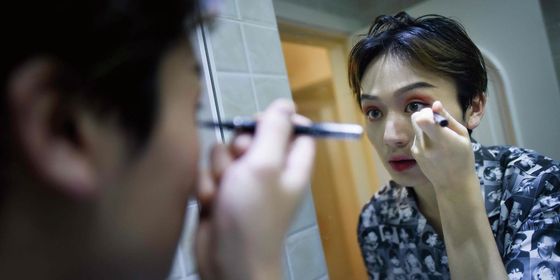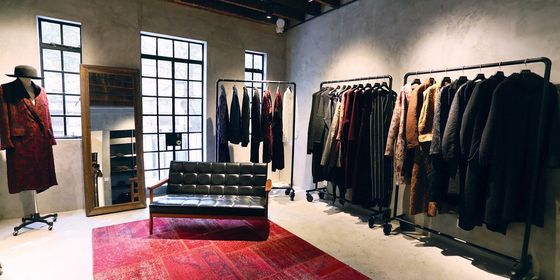Chinese brands may clothe the masses, but middle-class urbanites are yet to be convinced
“The problem with most Chinese brands is that they just copy the looks of the West,” remarks fashion enthusiast Emma Li, perusing racks of clothing at Beijing’s APM Mall in Wangfujing. “There are no design elements that make them inherently Chinese.”
An HR manager by day, Li writes a style blog by night. “Why would I buy a Chinese brand, when it is just as economical to buy a foreign brand?”
Toeing the line between mainstream and traditional influences, however, is a difficult task. Leaning too heavily toward the mainstream, a brand can face accusations of simply copying Western designers. However, overly incorporating Chinese styles may limit the brand to the wallets of China’s older generations—even as the government’s policies to promote homespun aesthetics.
“It is hard to be a designer here in China,” notes Zhang Jing, who studied fashion design at the University of Arts in London before coming back to China and opening several high-end fashion stores in Beijing. “Most of the styles and colors are decided by European fashion houses.”
“I think a lot of Chinese brands still copy from the West. Chinese designers need time to mature,” believes Camila Li, an entrepreneur in her mid-30s who, with her penchant for designer purses and head-turning outfits, is typical of the country’s newly affluent and fashion-conscious consumers.
Although a widely circulated February report by the Consumer Search Group claims that 45 percent of China’s luxury buyers plan to purchase domestic designer brands within the next 12 months, Camila Li seems unlikely to replace her wardrobe anytime soon. “There are some brands, like Shanghai Tang, that utilize Chinese traditional elements like the qipao,” she tells TWOC, “But, I just don’t see myself wearing those. Well, maybe once in a while.”
Despite its name, Shanghai Tang is not even a fully homegrown brand; founded in 1994 by the late Hong Kong businessman David Tang, it was bought four years later by the Swiss-based Richemont Group.
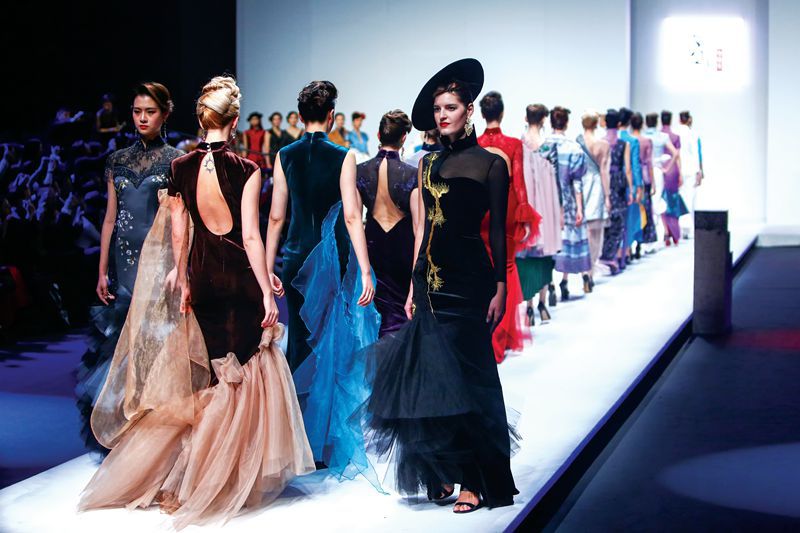
Models wearing clothing with Chinese characteristics on a Beijing catwalk
The preference for foreign fashion has persisted despite moves by the government to curb its appeal. Foreign luxury brands were hit hard by President Xi Jinping’s anti-corruption campaign, but now the market is being re-grown by the pocketbooks of middle-class consumers. Meanwhile, “as Chinese manufacturers try to move up the value chain as part of the country’s “Made in China 2025” plan, China Daily noted that “fashion designers in China are working to reinvent themselves as innovators.”
No one embodies the drive for homegrown Chinese fashion brands more than China’s “First Lady,” Peng Liyuan. In 2013, the state media coined the hashtag #LiyuanStyle to praise Xi’s wife—famous in her own right as a folk singer—for using her public platform to promote Chinese designers, in particular Ma Ke of the brand Exception.
Overseas media quickly picked up on Peng’s style, with Vanity Fair naming her the world’s best dressed first lady; PopSugar listing her as one of their fashion icons; and Forbes calling her one of the most powerful women of the world.
While Weibo has nothing but praise for Peng’s fashion choices, though, that buzz may not equate to sales for Chinese designers: No trendy label or fashion guru on Weibo has actually admitted to being inspired by Peng, while searching “Liyuan Style” doesn’t turn up any results on online marketplace Taobao.
China’s urban youngsters are yet to be convinced that traditional Chinese elements represent the next wave of fashion, believing they reflect the tastes of the older generation. Meandering into Mandarin Collar, a sleek, minimalist store for men, Emma Li carefully examines the brand’s dark blue and gray hues, coarsely spun cottons and linens, Chinese knots, and namesake collars. “I could never buy this and bring it home to my husband,” she concludes, eyeing the 1,200 RMB price tag on one shirt. “This looks like something a man in his 50s or 60s should be wearing, not a man with a 3-year-old daughter.”
At the clothing section of a state-owned commercial mall, filled with significantly older clientele, cashmere sweaters adorned with Sichuan opera masks, and a bright magenta qipao with a black faux-fur collar, equally fails to impress. “There is no way that these brands will survive in the upcoming decade,” Li decrees. “Even my mother wouldn’t wear these clothes.”
Striking a balance between modern and traditional aesthetics may be the key for Chinese designers trying to differentiate themselves and remain relevant to China’s fashion-forward urbanites—although it is easier said than done. “It is hard to take international fashion trends and put a Chinese spin on them,” notes a male fashion editor in one of Beijing Central Business District’s speakeasy bars.
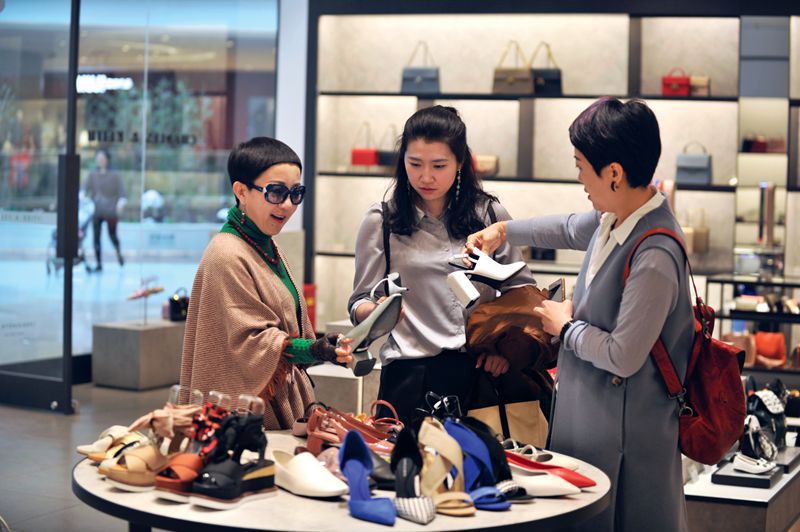
Price-conscious shoppers will opt for domestic brands, often bought on Taobao
Only a few are successful. “I love Shiatzy Chen,” Li gushes, referring to the Taiwanese luxury fashion house founded by the so-called “Chanel of Taiwan,” Wang Chen Tsai-Hsia. “[It] does a great job at taking traditional Chinese patterns and mixing them with Western-cut clothes.”
Global trends don’t pay much attention to tradition or geography. “The 2010s was all about streetwear in the fashion industry—and there isn’t anything innately Chinese about that,” says the editor. “But, you have a few brands like CLOT by [Hong Kong-Canadian popstar] Edison Chen that are able to do it pretty well.”
Despite the sex scandal that rocked his career a decade ago, Chen is serious about his new venture into fashion, calling CLOT “an initiative to bridge between East and West, China and America” in an interview with Forbes. A frequent collaborator with Nike, with stores on both sides of the Pacific, the label does not shy away from its “Made in China” connection. Far from it: CLOT’s 2019 spring and summer promotional photos from Paris showcase t-shirts with cartoon images of dragons and cranes; hoodies with Chinese porcelain patterns; and even shirts with Chinese knot buttons.
“There are several Chinese brands getting a name in the West, but we shouldn’t take it out of context,” says Zhang, the designer. “A lot of people immediately start thinking about high-end brands. They forget that almost everyone in third, fourth, and fifth-tier cities are dressed exclusively in local brands.” Indeed, in rural areas, the nearest clothing mall is often Taobao, which allows cost-conscious, brand-ambivalent consumers to shop based on price point—a battle which local wholesalers will always win.
Cost is just one arena in which foreign brands have problems competing; fit is another. “Foreign brands aren’t cut for the Chinese shape,” complains Zhang, noting that most of her female customers opt for Italian business suits instead of unflattering dresses. “This means that Chinese brands are going to continue to survive.”
Still, after over a decade in the Chinese market, foreign brands have begun to wise up. Visits to any mainland H&M or Gap will show that the stores offer predominately “petite fit” for women and “slim” for men, while some brands have gone to the next level, offering clothing specifically cut for the East Asian body shape (typically shallower front-to-back, and wider width). A plethora of brands have followed suit, such as Canadian athleisure bellwether Lululemon, which advertises its special “Asian cut” to China’s next generation of yogis.
“When I visit the US, I sometimes have to shop in the children’s section,” laughs Emma Li. “Especially for shoes.” While the average Chinese female shoe size is 5.5, most department stores in the US don’t stock shoes smaller than 6. Normally, Li ends up buying items in the US that do not require a fit, like bags, scarves, jackets, jewelry, and sunglasses.
After a long day of window-shopping in Wangfujing, Li finally makes a purchase: An H&M leopard print t-shirt that was on sale for Chinese New Year. Before heading outdoors, though, Li bundles in up in a massive, eye-catching turquoise down coat, the kind that’s ubiquitous across all regions and city-tiers of China. “Do you like it?” she asks. “As soon as I saw the color, I thought I had to have it. It was a good price too…I bought it on Taobao.”
Talking Shop is a story from our issue, “China Chic.” To read the entire issue, become a subscriber and receive the full magazine.





